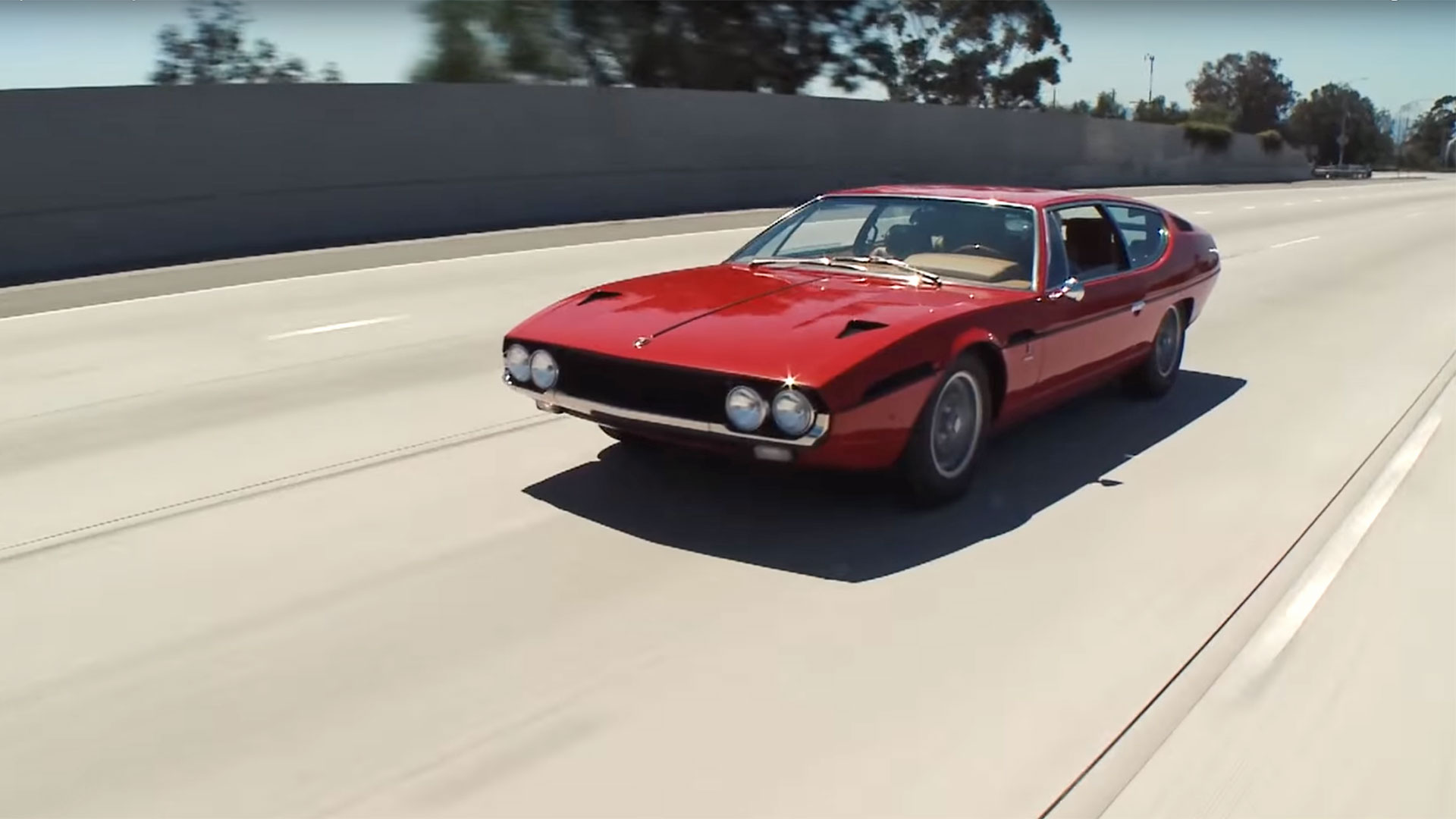

As Jay Leno sums up his 1969 Lamborghini Espada, featured on this week’s Jay Leno’s Garage, he highlights a key differentiator between the preeminent Italian supercar manufacturers: Lamborghinis were built to be great touring cars while Ferraris were made to race. Ferruccio Lamborghini thought Ferraris were nice, though a bit crude. Enzo was a competitive driver who made street variants of his speedy sleds to fund his race addiction, omitting creature comforts. Lamborghini wanted comfort, style and power, and Leno thinks a perfect mix of those attributes were represented in the Espada, the Italian Rolls-Royce.
Back in the Eighties, Leno was torn between purchasing two cars: a mid-Sixties Ferrari 330 GTC or a 1969 Espada. The Lambo had more space, more horsepower and was two and a half grand cheaper, so Leno chose the bull over the stallion. “Twenty years later, the Ferraris are worth almost a million, while the Espadas aren’t worth quite as much,” the host chuckles, masking what sounds like a slight tinge of regret. Still, the thing is worth at least three times what Leno paid for it, so he can’t be that mad.
As for that unique body, Marcello Gandini is behind the lines. If that name sounds familiar it’s because Gandini worked for iconic auto design house Bertone, and was responsible, in part, for the stylings of the Countach, Miura, Bugatti EB110 and BMW E12. As for the finished result, Leno correctly notes you’ll have a binary reaction to the vehicle. “Either you love it or you hate it.” But that’s the point of good design; it fires you up. Of the 1,200 produced, Leno’s “never seen anyone take an Espada and make it look better.”
For this Series II Espada —Spanish for “sword”—Leno kept it stock under the hood, sprucing up but not bettering that 3.9-liter V12, providing about 350 horses. “This car isn’t about speed, though it does go fast. It’s about how you feel when driving it. It’s such a communicative car, one that lightens up at speed and starts to feel more secure,” he says. Fast, indeed. When he gets the low-slung, cherry wedge hauling on the highway, he quips, “Just like that, you’re up to 120.” While we secretly hope Leno was reading from his speedo in the moment, flagrantly breaking a number of California laws, it’s more likely that’s a spot of hyperbole for our benefit.
It sounds sublime, especially when Leno romps on it. He and his team of mechanics and restorers took their time going through the rebuild, partially because they had to. “Italian wiring in the Sixties was like bolognese spaghetti,” he says. “You’ve got wires going in all directions. One can be red at the beginning and green at the end and you don’t know if that’s from the factory or what. It was a nightmare to get it sorted.” In a historic ride, it’s among first things you want to address, given how quickly a stripped wire residing atop the frame can cause a short and car-consuming fire. The mechanical restoration happened ten years back and this time around Leno and his guys focused on refreshing the interior.
The saddle tan-coated cabin appears pristine, wrapped nicely around those plush seats, the enormous gauges and dials on the dash and the center console. As Leno thrusts the four-wheeled sword through Los Angeles traffic, it’s striking how low and small the car looks when modern cars serve as a backdrop. It’s a fact not lost on Leno, who reminds us this was considered remarkably spacious upon its debut.
The video features some filler, including Leno’s terrible Italian impressions and announcement that the crew had meatballs for lunch in honor of the ride, but there’s also a heap of wonderful factoids and tidbits that you’ll find interesting, even if you’re part of the camp that hates the car’s aesthetic. Enjoy.
